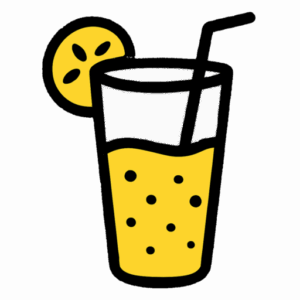The Age of Distraction


Pre-Reading Discussion
- How often do you get distracted during the day?
- Do you think modern life is making it harder to concentrate?
- Do you multitask? Is it effective?
- Is distraction always a bad thing?
Vocabulary Preview
Guess the meaning of the following words:
- cognitive overload
- sustained attention
- fragmented thinking
- dopamine-driven feedback loop
- attention economy
- overstimulation
- digital fatigue
- neural plasticity
The Age of Distraction
In an era defined by speed, connectivity, and infinite access to information, attention has become a scarce commodity. No longer is time our most precious resource—our ability to focus is now what’s under siege. The 21st century has ushered in the rise of the attention economy, in which tech companies compete not for your money, but for your mind.
The average person today switches tasks every 40 seconds while working online. Notifications, messages, algorithm-driven newsfeeds, and a near-constant stream of digital stimuli bombard our senses. This leads to fragmented thinking, where our thoughts are no longer linear but scattered across fleeting impressions. We skim rather than read. We glance rather than absorb. Our brains are adapting to this chaos—a phenomenon often celebrated as neural plasticity—but the adaptation may come at a cost.
Studies suggest that sustained attention—the ability to focus on a task without interruption—is declining, especially among younger generations. While multitasking is often praised as a modern skill, research consistently shows that doing multiple things at once reduces the quality of performance and increases mental fatigue.
Moreover, the digital world exploits our neurological wiring. The brain’s reward system is activated every time we receive a new message or notification, creating a dopamine-driven feedback loop. This makes distraction addictive. We check our phones not because we need to, but because we’ve been conditioned to crave novelty and instant gratification.
Yet, it would be simplistic to demonize technology entirely. The problem lies not in the tools themselves, but in how we use them. Some argue that we are not victims of distraction, but willing participants in a culture of overstimulation. We are complicit in designing lives with no space for stillness, silence, or boredom—all of which are essential for deeper thought and creativity.
Digital fatigue is real. Many professionals report feeling mentally exhausted, not from physical labor but from the sheer volume of input they must process daily. As a result, mindfulness, digital detoxes, and ‘deep work’ strategies have gained popularity in recent years, representing a collective attempt to reclaim attention as a form of resistance.
The question remains: can we learn to manage our minds in a world designed to hijack them? The answer may lie not in avoiding distraction altogether, but in cultivating intentional focus—a skill that, paradoxically, may become the most valuable asset in the future.
Post-Reading Comprehension Questions
- What is the central idea of the article?
- What evidence is presented to show that attention is under threat?
- How does the author describe the role of dopamine in digital habits?
- Why might neural plasticity be a double-edged sword?
What is the central idea of the article?
The article argues that in today’s digital world, our attention is constantly under attack due to overstimulation and the design of technology that exploits our cognitive vulnerabilities. It suggests that maintaining focus has become a major challenge and a critical skill in modern life.
What evidence is presented to show that attention is under threat?
- The average person switches tasks every 40 seconds while working online.
- People experience fragmented thinking and reduced ability to focus deeply.
- Studies show sustained attention is declining, especially in younger generations.
- Multitasking reduces performance and increases fatigue.
- People report experiencing digital fatigue due to constant information overload.
How does the author describe the role of dopamine in digital habits?
The author explains that every time we get a notification or a message, our brain releases dopamine, which reinforces the habit of checking devices. This creates a feedback loop that makes distraction addictive—we start craving constant stimulation even if it’s not necessary.
Why might neural plasticity be a double-edged sword?
While neural plasticity allows our brains to adapt to new environments and stimuli, it also means that our brains may rewire themselves to prefer shallow, distracted thinking. In other words, we may lose the capacity for deep focus if we constantly engage in surface-level tasks.
What solutions does the article suggest for dealing with digital distraction?
- Practicing mindfulness and deep work strategies
- Taking digital detoxes or consciously disconnecting
- Creating space for stillness, silence, and boredom
- Developing intentional focus as a personal discipline
Vocabulary Work
- Define the new words using your own words.
- Use each in a new context or sentence.
- Identify synonyms/antonyms where possible.
- Think about which of these concepts you encounter in your daily life or work.
Critical Discussion
Practice answering these discussion questions.
- Is distraction more of a personal failing or a systemic issue?
- Should schools and workplaces take active steps to protect attention spans?
- How do you personally manage your focus?
- Can technology ever be designed to support deep concentration rather than destroy it?
- Do you agree that focus will be the most valuable skill in the future?
